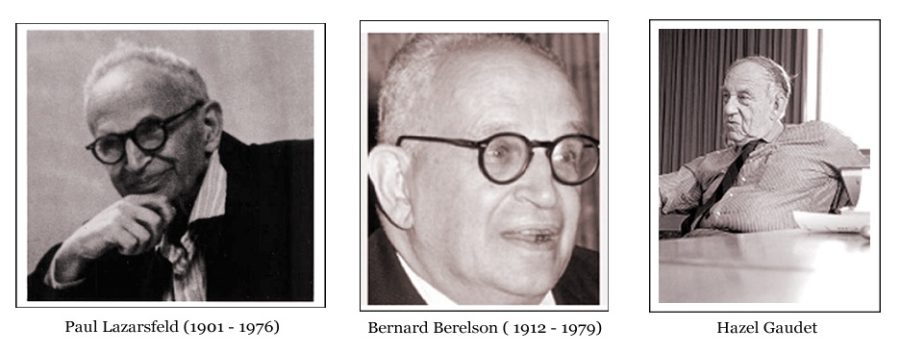Paul Lazarsfeld, the father of the ‘two-step flow theory’, came up with an idea in the 1940s alongside his colleagues. The ‘two-step flow theory’ was the idea that there wouldn’t be a direct flow from media outlet to public, but instead, a medium between both. The medium which they believe had influence was that of opinion leaders. Opinion leaders are those who hold influential powers and are well informed. They use their knowledge to shape opinion of the public, as suggested by the name ‘opinion leader.’ It is done in such a way where they receive their information from a media outlet which could be in various forms, such as print based media like newspapers, to digital like television, radio and social media. The media which they almost absorb in a way, lets them form their own opinions and views on the topic. This exposure process of the opinion leaders to the media outlets is classed as ‘Step One’ of the theory.
What could be regarded as the ‘Step Two’ of the two-step theory, would be the further exposure of the opinion leaders to people they are either close with, or share a mutual trust with. This is solely because those who listen to the opinion leader in a face-to-face or personal setting, will be those who hold a relationship or friendship, or may just be interested in the distributors opinion. For example, the opinion leader could be a close friend, a parent or even a podcaster that you listen to. In your eyes, they could help shape your opinion from the original media source based on the way it is relayed back onto you from the medium whoever that may be.

There are many implications that the two-step theory causes, and that is because of a number of reasons. One major one could be the fact that the opinion leader could hold a major influence within communities or teams, based on their opinions and the actual influence they hold. For example, if a religious leader or somebody of importance within a community like a priest, holds a strong opinion on a form of media they have received that affects said community or topic that is of importance to them, they could be biased. Bias is something which could then reflect onto the community as a mass and shape their views solely because of what was expressed to the from a person the trust the opinion of. Another implication could be that the public are not directly influenced by the media, only because there is a medium involved and like previously mentioned, their take or opinion could relay onto the receiver, creating distrust between the person and the media directly. It creates reliability on the receiver and their medium to help shape their opinion based on what their opinion leader believes in. This makes a person less dependent on the media itself and what is available through print or digital, but more dependant on the opinions they hear to help shape their views.

